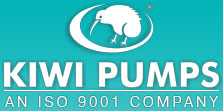
Pumps Information » Progressing Cavity Pumps
Progressing Cavity Pumps
Progressing Cavity Pumps are a type of rotary positive displacement pump designed to transfer fluid or media with suspended solids or slurries from the suction side of the pump to the discharge side of the pump from storage tanks or through pipelines. Advantages of progressing cavity pumps include moving viscous media at lower velocities. The pumps can be used in higher flow applications.
Progressing cavity pumps use a singular screw to handle fluids in a continuous flow. They may be single stage or multistage. The rotating assembly includes the stator, the drive, and bearing assembly. The pin joint or universal joint provides a seal to separate the pumped liquid or gas. The bearing assembly, shaft seal, and material may be chosen to fit the application. When choosing materials for progressing cavity pumps, the user must consider the type of liquid to be pumped and the components of the pump that are in contact with the fluid. Hygienic or corrosion resistant materials may be required for the stator. Neoprene, rubber, or plastics may be used. The housing or other pump materials may be stainless steel, iron, bronze, titanium, or other alloy. The stator or lobe is available in a number of geometries. Each cavity holds a certain volume; with each turn fluid is moved through the pump.
The capacity of progressing cavity pumps can be calculated based on the dimensions of the pump and the rotational speed of the rotor since a specific volume is transferred with each revolution. The number of curved areas on the stator will also affect the pulsation of the media moving through the pump. Generally, progressing cavity pumps provide a low pulsing flow. In water and wastewater treatment applications, untreated sewage, excess sludge, or concentrated slurries may be moved. The viscosity of the fluid transferred and the lift required may affect the speed and power required. A variable speed drive could be used in applications where slurries are moved from storage tanks to water supplies.Progressing cavity pumps can be used in sanitary and sterile applications such as pharmaceutical, chemical, and food processing applications.
One of the features may be an unsealed pin joint or universal joint that is manufactured to 3A standards. Progressing cavity pumps in these applications can be flushed or disassembled for easy cleaning.
